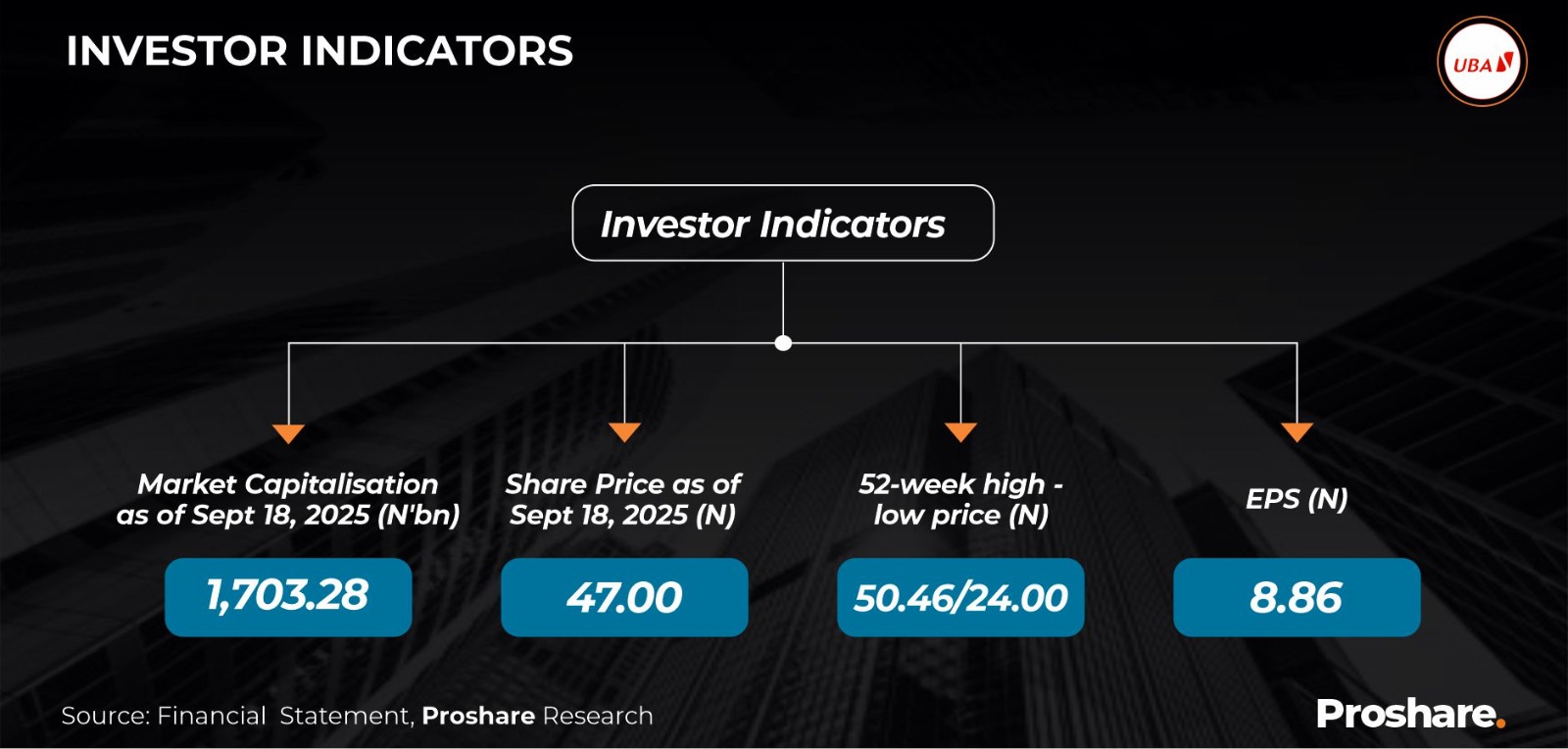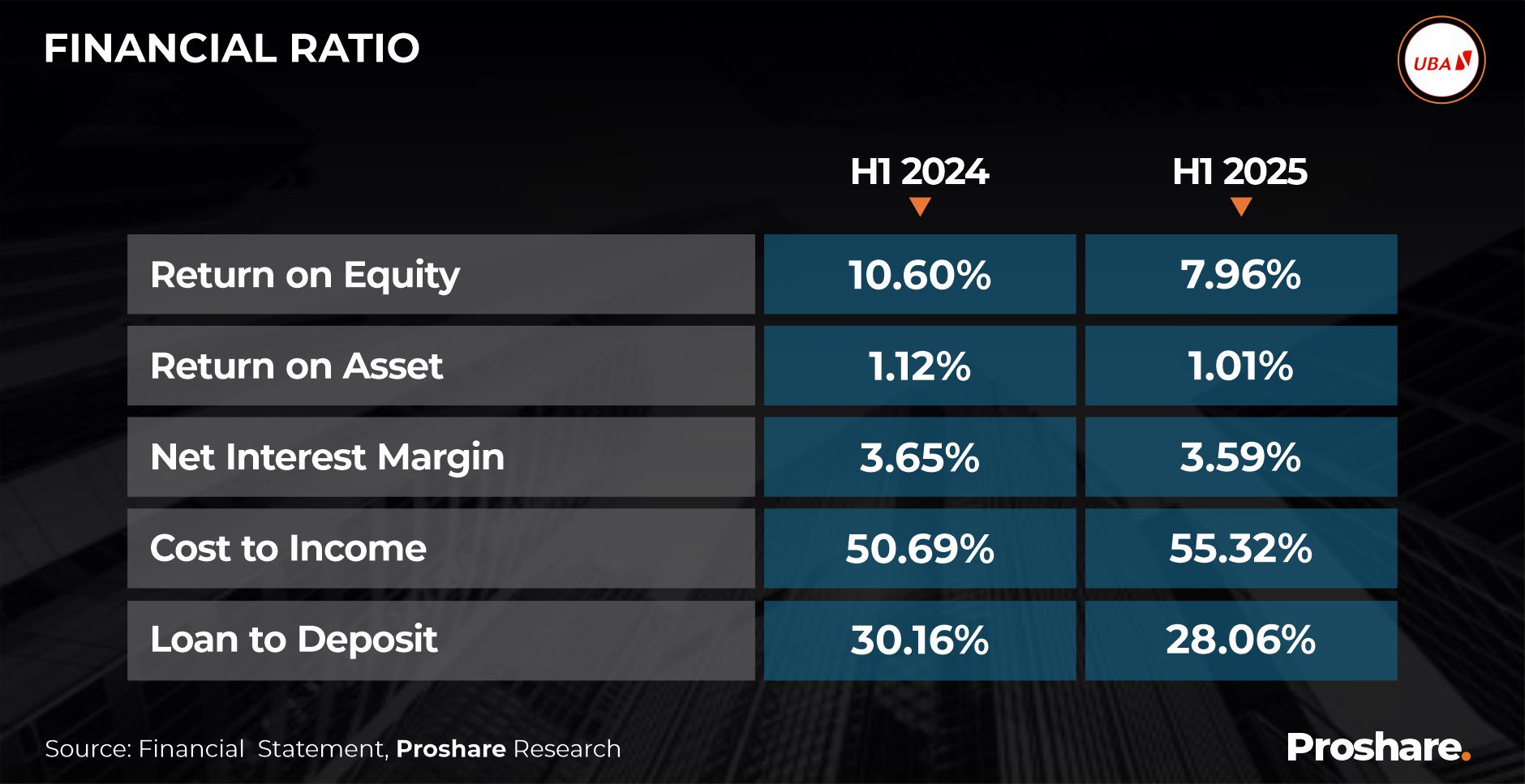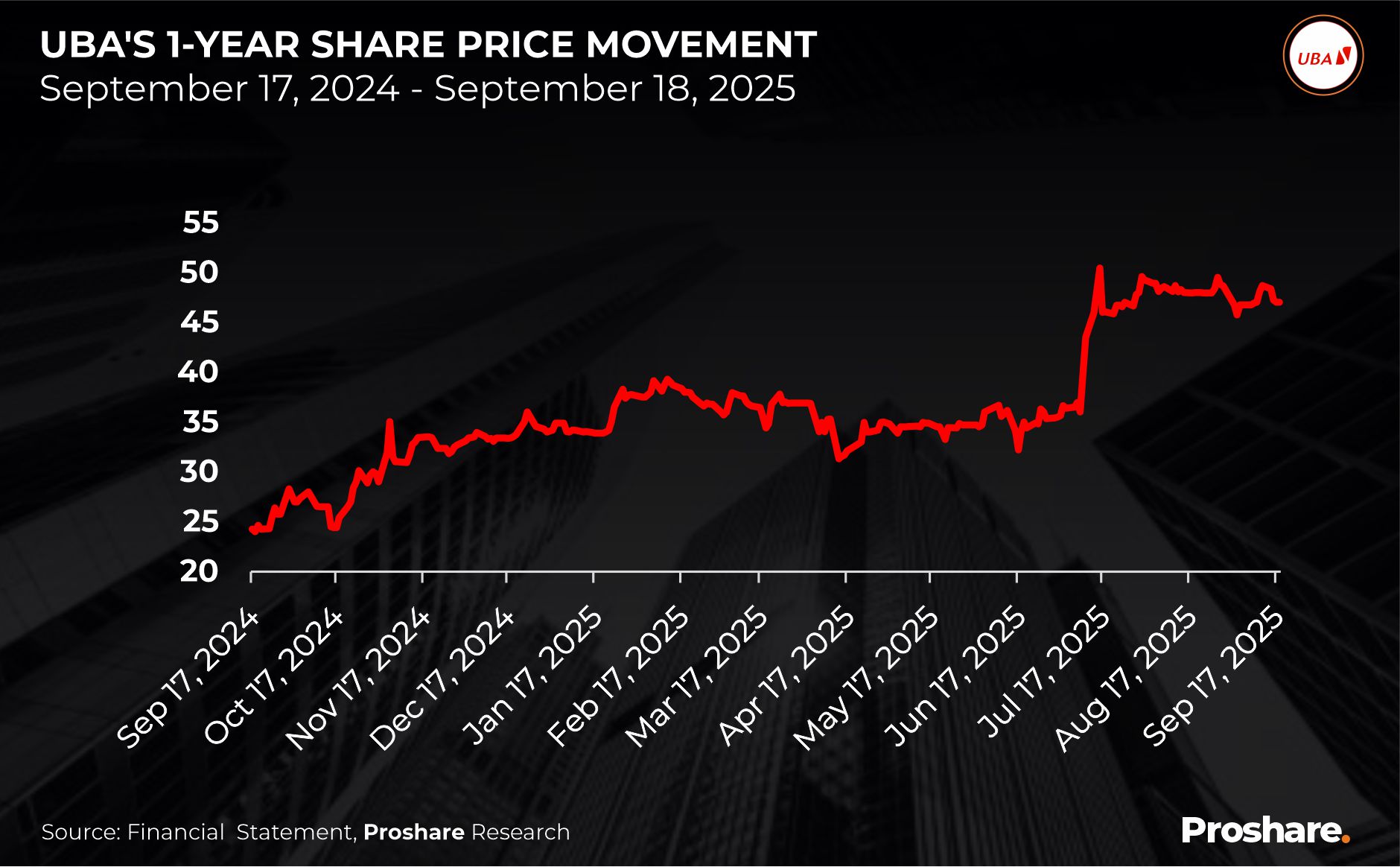UBA H1 2025 Results: Top-line Earnings Rise as Gross Revenue Gets a +17.28% Boost on Higher Margins

Fundamentals
With branches in 20 African countries and other strategic locations, UBA continues to strengthen its proficiency by offering a diverse range of services across retail, corporate, and investment banking. The group’s H1 2025 results show sustained growth in its core operations, driven by a growing deposit base and a rise in interest income. Total deposits grew by +18.93%, reflecting customer confidence across markets. UBA’s lending and investment capacity improved as the group’s total assets rose by +17.40%, from N28.34trn in H1 2024 to N27.60trn in H1 2025. However, interest expense rose by +70.43% to N560.61bn in H1 2025 from N328.94bn, suggesting higher funding costs that affected its bottom line.
The favourable impact of the high-interest rate environment on widening bank interest margin and top-line earnings comes with the threat of higher exposure to credit risk and macroeconomic headwinds. This played out in UBA’s financial numbers, with a higher non-performing loan (NPL) ratio, a net monetary loss, larger operating expenses, and lower profit. In other words, the bank needs to be cautious about creating new loans and adopt a tighter cost-containment strategy to avoid a relatively fragile performance repetition in H2 2025. UBA’s shareholders’ value grew by +1.25% to N4.22trn in H1 2025 from N2.99trn in H1 2024, further strengthening its balance sheet and capital base. However, to achieve its 2025 financial targets and projections, UBA has announced an ongoing rights issue to meet the Central Bank of Nigeria’s (CBN’s) Tier 1 capital requirement (see Illustration 1).
Illustration 1:

Financials
The pan-African bank’s top-line earnings in H1 2025 showed solid improvement with double-digit growth rates. Gross earnings increased by +17.28% in H1 20205 to N1.61trn from N1.37trn in H1 2024 year-on-year (Y-o-Y), showing sustained top-line performance. Interest Income grew by +32.89%, outpacing gross earnings growth and reflecting strong performance in the loan book and investments. However, pre-tax profit declined by -3.28%, likely due to the sharp increase in interest and operating expenses. Post-tax profit managed a modest +6.06% increase, showing resilience despite margin pressures. Shareholders’ Equity rose by over N1.2tn, driven by retained earnings (+45.63%) and increased share capital (+20%). This indicates a stronger capital base, which is crucial for regulatory compliance and driving operating growth (see Table 1).
Table 1:

UBA group’s net interest margin (NIM) slightly dipped to 3.59% in H1 2025 from 3.65% in H1 2024, suggesting tighter spreads. The Cost-to-Income ratio deteriorated from 50.69% to 55.32%, indicating increased cost pressure possibly due to inflation, tech investments, or regulatory costs. Loans and Advances increased by 10.68%, reflecting a modest expansion of credit. Investment Securities rose by 19.66%, indicating strategic portfolio positioning in high-yield assets. Loan-to-Deposit Ratio fell to 28.06% from 30.16%, implying conservative lending or a surge in deposits outpacing credit creation (see Table 2).
Table 2:

Technical
UBA’s share price as of September 18, 2025, was N47.00, placing the current share price near the peak of the 52-week range of N24.00 – N50.46, indicating bullish investor sentiment and a market cap of N1.70trn, showing strong investor confidence. UBA stock experienced mild fluctuations in its share price (see Chart 2).
Chart 2:

The group’s price-to-earnings (P/E) ratio of 4.00x in H1 2025 (compared to 2.52x in H1 2024) remains relatively low, signalling undervaluation of its stock. Similarly, the price-to-book (P/B) value increased to 0.30x in H1 2025 from 0.26x in H1 2024, indicating that the company is priced below its book value (see Table 3 below).
Table 3:

Opinion
UBA’s H1 2025 result indicates a resilient but margin-pressured performance. The bank delivered strong growth in earnings and assets, backed by an expanding deposit base and rising investment income. However, profit margins and efficiency ratios are under stress due to increasing costs.
UBA is currently trading at a significant discount to its book value and earnings, indicating an attractive entry point for long-term investors. Analysts’ consensus on investing in UBA stock suggests increasing trading volume; most capital market operators (CMOs) advise a buy, while a few recommend accumulation.



